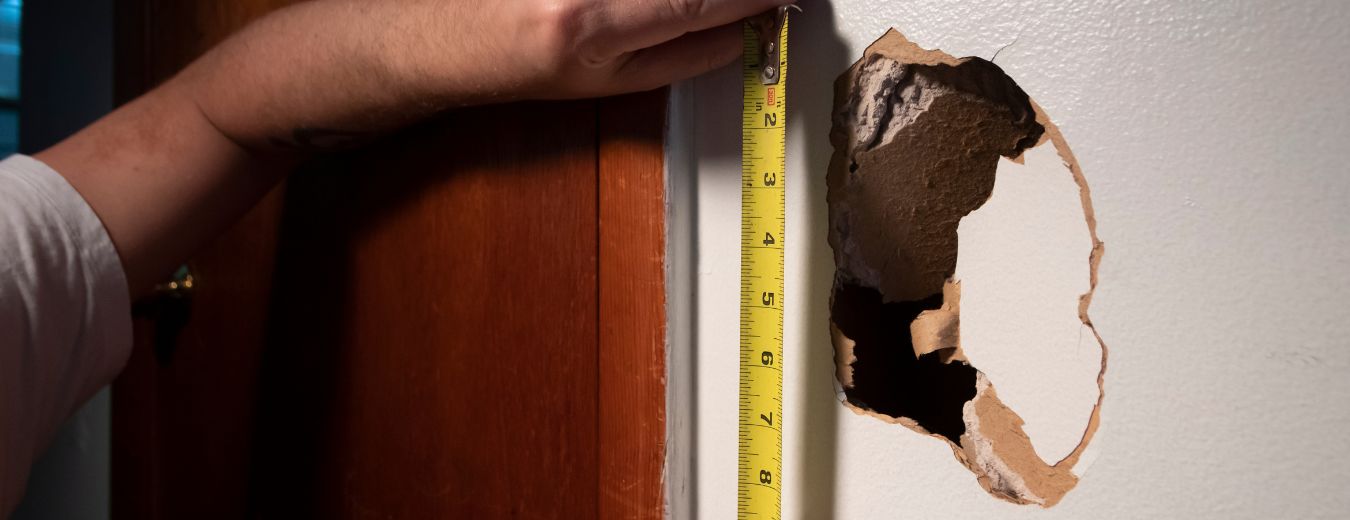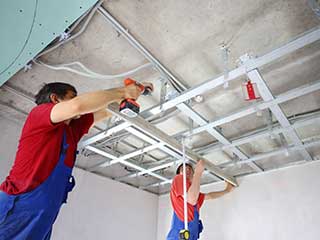Discover the most effective Practices for Effective Drywall Fixing and Installation
The art of drywall repair work and setup needs a blend of skill and accuracy. Grasping the vital tools is necessary for attaining a smooth finish. Recognizing the step-by-step procedure can make a considerable difference in the result. Proper strategies for mudding and taping are likewise vital. What remains is the expertise of maintenance that guarantees longevity. These aspects together produce a polished outcome worth exploring further.

Crucial Devices for Drywall Fixing and Installment
When embarking on drywall repair work and installment, having the right tools can significantly enhance the effectiveness and quality of the work. An utility knife is essential for cutting drywall sheets precisely, while a drywall saw can aid in making extra detailed cuts. Taping blades, offered in different dimensions, are important for applying joint substance efficiently and evenly. A drywall sander, preferably with a dust collection attribute, aids achieve a refined coating, decreasing the need for considerable cleaning.
Furthermore, a gauging tape guarantees precise dimensions, and a level makes certain that installations are straight and plumb. Security equipment, consisting of dust masks and safety glasses, need to not be neglected to safeguard versus particles and dirt. A stud finder help in finding framing participants, guaranteeing safe installation. By equipping oneself with these essential tools, the repair service and installment procedure comes to be more workable and leads to a professional-quality result.

Step-by-Step Overview to Patching Holes
Patching openings in drywall needs a systematic approach to assure a seamless repair work. Initially, the area around the hole should be cleaned up and any kind of loose particles eliminated. For tiny holes, a putty blade can be utilized to use a lightweight spackle, pressing it right into the opening and smoothing the surface. After it dries, sanding is necessary to develop a level surface. For bigger openings, a patch of drywall might be essential. This includes reducing an item of drywall somewhat bigger than the hole, securing it to the wall surface with screws, and making use of joint compound to cover the joints. When the compound dries out, it must be fined sand smooth. Priming the patched area prior to paint will ensure an also finish. Complying with these actions will certainly result in a professional-looking fixing that blends flawlessly with the surrounding wall.
Methods for Seamless Drywall Installment
Achieving seamless drywall setup needs careful planning and implementation. It is crucial to reduce and determine drywall sheets accurately to lessen gaps. Making use of an utility blade, installers need to rack up the board before snapping it along the cut line, making certain tidy edges. Properly straightening the sheets is vital; beginning with the top and working down assists preserve uniformity.
Securing drywall to the studs calls for consistent spacing, typically every 16 inches, using screws as opposed to nails for better hold. This method reduces the risk of pops in time. Furthermore, surprising the seams between sheets enhances structural stability and decreases the visibility of joints.
Finally, using the appropriate density of drywall for particular locations-- such as moisture-resistant key ins restrooms-- additional adds to a flawless finish. Adhering to these methods will lead to a smooth and professional-looking installation, setting the phase for the succeeding completing procedures.
Completing Touches: Taping and Mudding
Ending up touches, such as taping and mudding, play a necessary function in attaining a refined drywall surface. Insulation includes using a thin strip of drywall tape over the joints and joints, making sure a seamless look. This process helps protect against fractures and creates a strong bond between drywall sheets. It is crucial to choose the appropriate sort of tape, with paper and fiberglass fit together being one of the most typical alternatives.
Mudding, or applying joint substance, complies with taping. This compound fills out spaces and ravel the surface area for a consistent coating. It is commonly used in several layers, with each coat requiring to completely dry prior to sanding. Correct technique includes feathering the sides to blend the substance right into the surrounding drywall, decreasing visibility.
When finished correctly, taping and mudding boost both the aesthetic and structural honesty of the drywall setup, leading to check a professional-quality surface.
Tips for Maintaining Your Drywall After Installation
:max_bytes(150000):strip_icc()/SPR-solutions-to-common-drywall-problems-p2-4120949-hero-c15a37669eae45478eca0cf15b34a1d1.jpg)
In addition, maintaining a consistent interior humidity degree can avoid bending or mold development. Using a dehumidifier in damp locations, like basements, is advisable. It's likewise advantageous to occasionally repaint areas that reveal wear, as this safeguards the underlying material. Lastly, when relocating furnishings or installing fixtures, care ought to be worked out to prevent damaging the drywall. By following these upkeep suggestions, homeowners can expand the life of their drywall, guarding it stays an eye-catching feature of their interiors.
Regularly Asked Questions
What Safety Equipment Is Needed for Drywall Repair and Installation?
For drywall repair work and installment, necessary safety and security equipment includes safety goggles to safeguard eyes, dust masks to avoid breathing of particles, gloves for hand security, and knee pads for convenience throughout extended kneeling. Drywall Installation Ogden Utah.
Just how Do I Establish the Drywall Density Needed for My Project?
To figure out the drywall thickness needed for a job, one must think about the wall surface's architectural needs, local building ordinance, and the intended use the space, generally selecting 5/8-inch or 1/2-inch drywall.
Can I Repair Drywall Without Removing Furnishings From the Area?
Yes, drywall can be fixed without eliminating furnishings from the space. Cautious planning and protective measures can reduce mess, enabling efficient repairs home while maintaining surrounding products risk-free from dust and damages throughout the procedure.
What Sorts of Drywall Are Finest for Different Settings?
Moisture-resistant drywall is optimal for restrooms and cooking areas, while soundproof drywall suits shared wall surfaces in houses. Fire-rated drywall is best for garages, and standard drywall works well in general living locations, making certain toughness and suitability for various settings.
For how long Does It Consider Drywall Mud to Dry Completely?
Drywall mud typically takes 24 to two days to dry totally, depending upon elements like humidity and temperature (Drywall Installation Ogden Utah). Thicker applications may need longer drying times, while thinner layers can dry quicker. Proper air flow aids drying
The art of drywall fixing and setup calls for a blend of skill and precision. When taking on drywall repair work and installation, having the right devices can considerably enhance the performance and high quality of the job. An energy blade is crucial for cutting drywall sheets exactly, while a drywall saw can aid in making much more detailed cuts. Accomplishing smooth drywall installation needs mindful planning and execution. Moisture-resistant drywall is excellent for kitchens and washrooms, while soundproof drywall suits shared wall surfaces in houses.